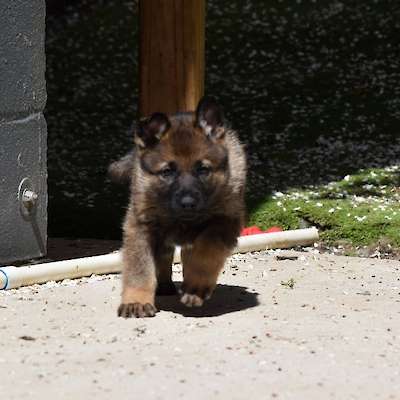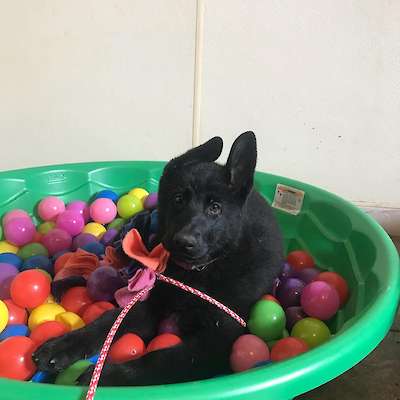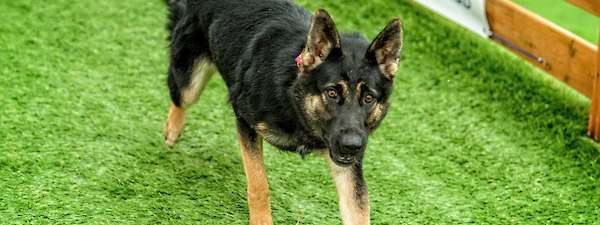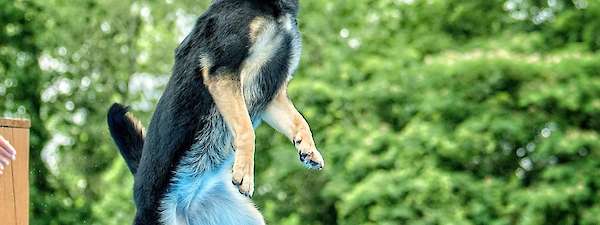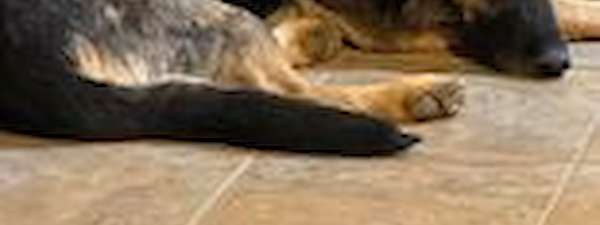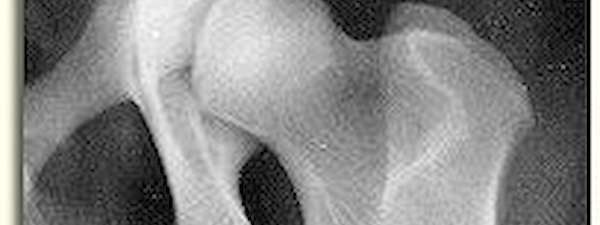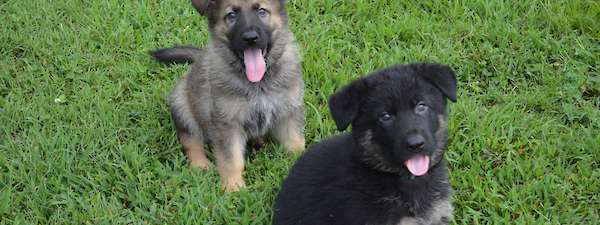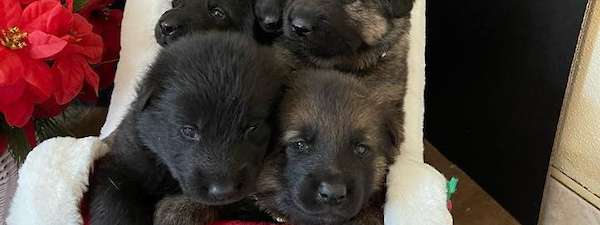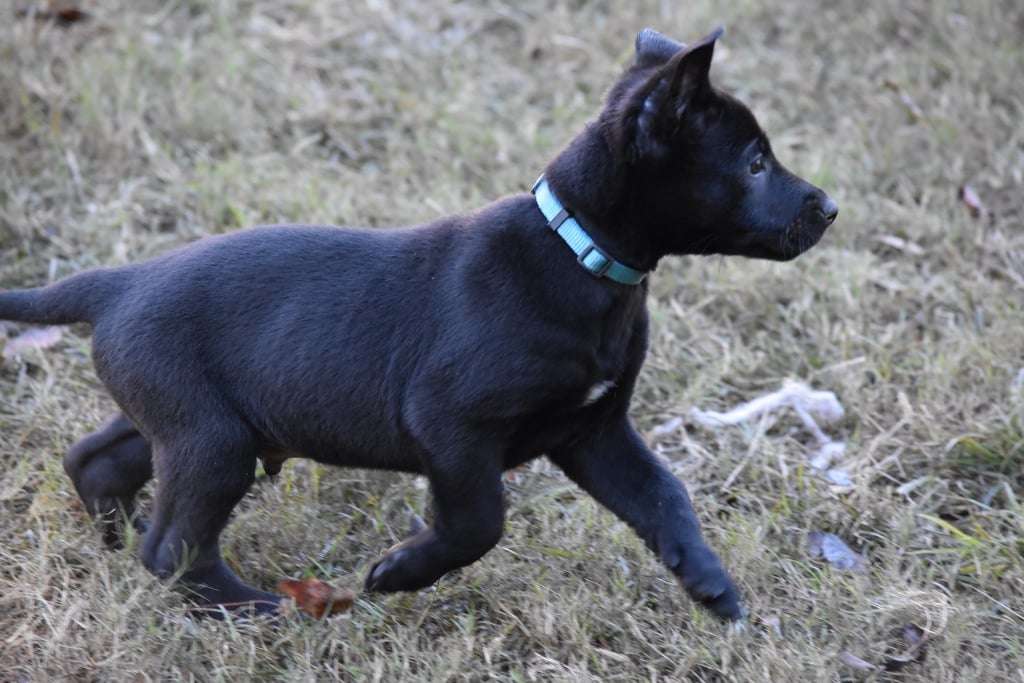
Puppy House Training
By not teaching or setting limits your puppy understands, you are probably contributing to future behavior patterns and problems. This is especially true when it comes to teaching your puppy proper house-training habits. The following is designed to teach owners to understand their puppy’s house-training needs, curb problems before they start, and establish proper patterns that can last a lifetime.
Based on your effort, consistency, and guidance your puppy will quickly learn there is no other place to relieve himself or herself other than outdoors. Some puppies, with 100% consistency on the owner’s part, can grasp house-training in as little as seven to twenty-one days. Some puppies may take up to six months or more if consistency is not in place and other factors are involved.
What allows your house-training efforts to be successful? House-training will not be successful without supervision, consistency, and guidance on the part of human members of the household. The critical parts of house-training can best be summed up using the four-legged chair analogy. The four legs of the chair represent the four parts that contribute towards a successful house-training effort. In order for a chair to stand, all four legs should be solid and equal. If one led is missing, out of place, or shorter than the others, we have a chair that is unstable and falls over. The four-legged chair comparison helps sum up the importance of the four parts that lead to effective house-training of your puppy. The four parts (or legs) of house training are:
- Crate training and supervision
- Regular schedule
- Feedback and discipline
- Cleaning up accidents
Each of these parts plays an extremely important role in keeping dog owners and their puppies on track. Neglecting or short cutting just one of those parts could have serious implications. The following plan is designed to teach owners to better understand their puppy’s house-training needs, head-off problems, and establish proper patterns that last a lifetime.

Your Puppy’s Health and Medication
Before going into to depth on the four parts of house-training it is important to assess your puppy’s overall health. Your puppy’s health can greatly impact the success of your house-training efforts. Parasites, infections, viruses, gastrointestinal upset, allergies (to food or environment), and other health issues can impact your dog’s elimination process and schedule.
Medications that your dog may be taking can also impact house-training. Some medications have side effects such as increased water intake, frequent urination, loose stools, constipation, to name a few. Consult with your vet to determine if your dog’s medication(S) could possibly be affecting your dog’s water intake, appetite, or digestive process.
If you have any questions or concerns, consult with your vet to verify that your puppy is healthy before and during your house-training efforts.
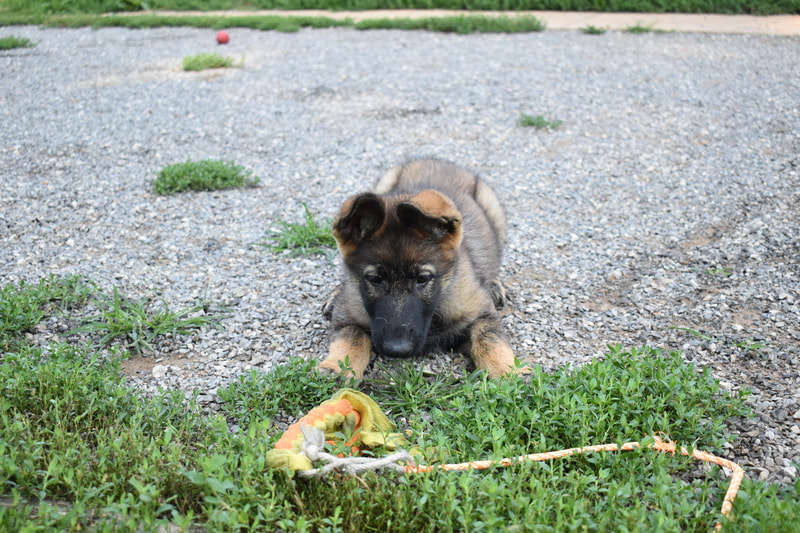
Crate Training and Supervision
The optimum way to prevent your puppy from misbehaving, injuring itself, and having accidents is the use of a dog crate. A dog crate is a dog specific cage made of wire or molded plastic. Its purpose is to provide confinement for reasons of security, safety, house-training, protection of household items, travel, or illness. Using a crate allows you to have a safe and secure space to keep your dog when you are unable to supervise them. This includes when you are away from home, sleeping, or unable to keep a watchful eye on him or her.
Some dog owners may think that confining their best friend in a crate is cruel or inhumane. Some people view using a crate like locking their dog up in a canine prison cell that might cause resentment and psychological damage. If introduced properly, your dog will see the crate is like having a room of his/her very own. Crates for puppies are much like how cribs or playpens are used for small children. The crate should be a safe place for the puppy to rest when you are unable to supervise them. Crate training aids dogs in satisfying their den instinct inherited from their ancestors. Canines naturally and instinctively prefer to rest in sheltered areas. In homes you will often notice dogs choosing sheltered or den like areas to rest. You will observe dogs getting behind or under furniture.
Your dog will feel secure once accustomed to his/her crate. The crate can greatly assist you with training by preventing unwanted behavior when a responsible person is not available to supervise and provide feedback. Your puppy’s crate should not be used for punishment. Many dog owners have attempted to use their dog’s crate for a “doggy time out” or “go to your room” type of punishment. In most situations the dog has misbehaved and the owner then places the dog in the crate to “think about what they have done” or as a means solitary confinement. This in turn can form a negative association with the dog’s crate. Using your dog’s crate for a canine time out is not usually effective and can often be counterproductive.
One option when looking for a crate would be a wire metal crate that includes a removable metal or plastic floor/tray. You should purchase a crate large enough for your dog to stretch out on its side and to sit or stand erect when fully grown. If you have a puppy, it is more economical to buy a wire crate that will accommodate him as an adult, and then partition it to the right size. Many wire crates with a metal divider/partition that can be adjusted as a puppy grows and can be removed when your dog is full grown. If your crate does not have a partition, a movable wire or pegboard partition can be made or purchased. Wire crates require assembly and can be taken apart to allow you to move or travel with them. There are also models that fold down in one piece with handles for easier transportation from one location to another. Plastic crates, often called airline carriers or vari-kennels, can also be used. These crates do not provide as much air circulation and some dogs can chew the plastic. A new crate may cost $40.00 to $250.00, depending on size and construction. This is well worth the investment in comparison to the cost of replacing household items or injury to your dog.
If your crate or the area provided in the crate is too large, it can undermine your house-training efforts. Your dog may eliminate at one end of the crate and lie down at the other. Dogs are usually very clean about their “den” areas and will be more likely to hold their urination and bowel movements if they have limited space. Use your partition/divider to section off the crate to allow your dog enough room to turn around and lay down.
Place your puppy’s crate in an area where it is convenient to get your puppy from the crate to the outside potty area. Many owners choose an area that the family spends a lot of time (kitchen or family room). Your puppy’s crate can also be placed in your bedroom at night.
It is not uncommon for a puppy or dog to whine or bark when first placed in a crate. This discomfort is not caused by the crate itself but by the adjustment to being left alone. Puppies before being placed in the home are used to constant interaction with mom, the litter, and the breeder. Being left alone is a new experience for them. Do not reward barking or whining by releasing the dog from the crate or with attention. If you are sure he doesn’t need to eliminate, try ignoring him until he is quiet. You can then praise him or take him out of the crate. If ignoring your puppy is not successful, you may try utilizing a spray bottle to curb the whining or barking. Fill a spray bottle with tap water and place the nozzle to stream like a squirt gun. Each time your puppy begins to whine or bark, squirt them with the water until they stop. The puppy should not see what direction the spray is coming from. The puppy should be under impression the house is doing the squirting as a result of the puppy vocalizing. If they realize that their protesting causes you to give in, you will have difficulty with house-training along with many sleepless nights. Dogs are creatures of habit and they will eventually acclimate themselves to the routine of crate training. With consistency your puppy will show improvement.
Feeding your puppy in his crate may assist your puppy in making a positive association with it. You should not leave meals in the crate for longer than the designated 15-20 minutes or feed your puppy immediately prior to confinement for a long period of time. Water should not be left in the crate since most puppies will spill the water. Other puppies will develop a habit of drinking water as an activity and this will impact your urination schedule. More about feeding and water schedule later.
During the house-training process you should remove all bedding or soft items from your dog’s crate. Puppies will often eliminate on soft or absorbent materials and push them aside in an effect to stay clean. This can compromise your house-training efforts. Once your puppy has made progress with house-training you may consider introducing bedding for short periods at a later date. Consult with a trainer if you have questions about whether or not the time is right to introduce bedding in your dog’s crate.
When placing your puppy in a crate, make sure that the crate is put together properly and all latches are secured. You should not leave any type of collar or leash on your puppy while in a crate. Collars can get snagged on crates and this may injure or accidently choke a puppy. Examine the area around where you placed the crate and removed any potentially dangerous items from your dog’s reach. You may leave a safe chew toy in the crate for your puppy. Make sure to monitor the puppy when you introduce the toy out of the crate initially to make sure it is safe.
Children should be taught that the puppy’s crate is a special place for the puppy. Children and adults should not pester the puppy when it is in the crate. Children should not play in the puppy’s crate.
If you have multiple dogs, each dog should have their own individual crate. This is especially important when you are raising two puppies at the same time. Having separate crates will not only assist you in your house-training efforts but help to prevent separation anxiety and other behavior problems.
It is important that when your puppy is out of its crate that a responsible person is providing supervision 100% of the time. It only takes a few seconds for an accident to happen. By supervising your puppy, you will be able to provide immediate feedback when your puppy attempts to relieve itself indoors. If you are unable to supervise your puppy the best place for the puppy to be is in the crate.
It is important to supervise your puppy when he/she is not in its crate. Most puppies have a strong instinct to keep the area where they sleep clean. When dogs need to relieve themselves, they instinctively seek out an area away from where they sleep. Puppies should not have the ability to roam the entire house unless 100% supervised. Initially you may benefit from restricting your puppy’s freedom in the house to only certain areas. This can be done through the use of a dog pen or baby gates that section off access to the rest of your home. Without a crate or direct supervision, your puppy will choose his own areas to relieve himself.
Before bedtime it is important to give your puppy one more opportunity to relieve himself (this will be discussed more later). When it is time for bed your puppy should be placed in his secure crate. Do not give into him if he cries or whines.
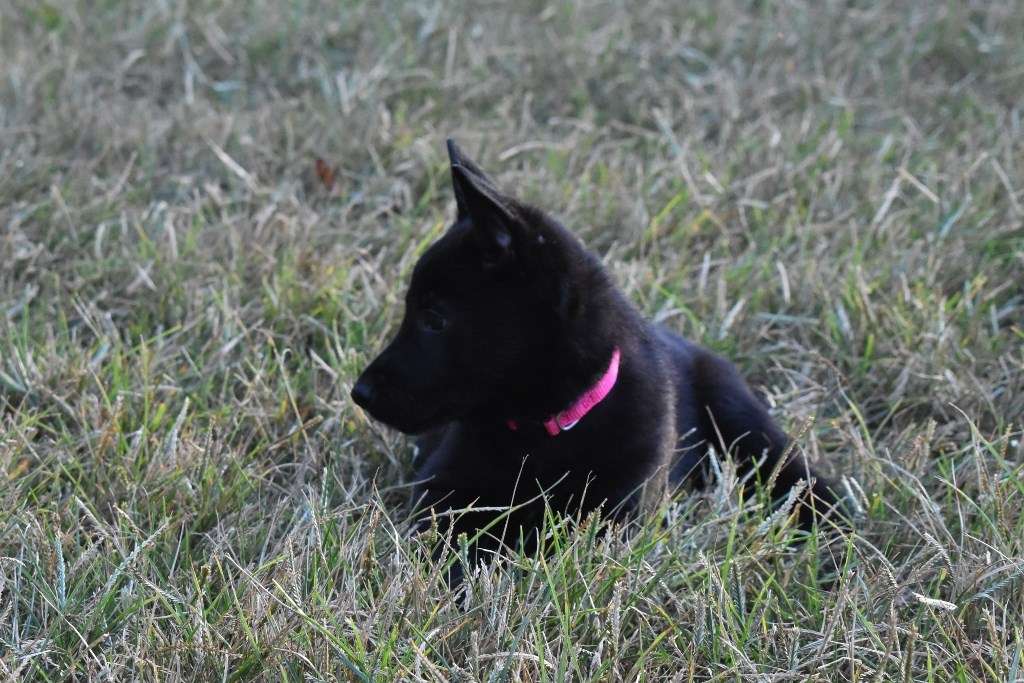
Crate Training and Supervision Review
- During the house-training process, your puppy should be supervised in the yard and house.
- The best way to prevent your puppy from misbehaving, injuring itself, and having house-training accidents is the use of a dog crate.
- If you cannot supervise your puppy (away from home, sleeping, or unable to keep an eye on him/her,) it should be confined to its crate.
- Your puppy’s crate should not be used for punishment or a canine time out.
- Limit the amount of space your puppy has in the crate during the house-training process to allow your dog to lay on its side comfortably.
- During the house-training process you should remove all bedding or soft items from your dog’s crate.
- You should not leave any type of collar on your puppy while in a crate.
- Children and adults should not pester the puppy when it is in the crate.
- If you have multiple dogs, each dog should have their own individual crate.
- It is important that when your puppy is out of its crate that a responsible person is supervising 100% of the time.
- Without a crate or 24-hour-a-day direct supervision, your dog will choose his bathroom areas.
- At night or when away, secure your dog in his crate.
- You can begin to give your puppy more freedom in the house and yard only after he is reliably housetrained.
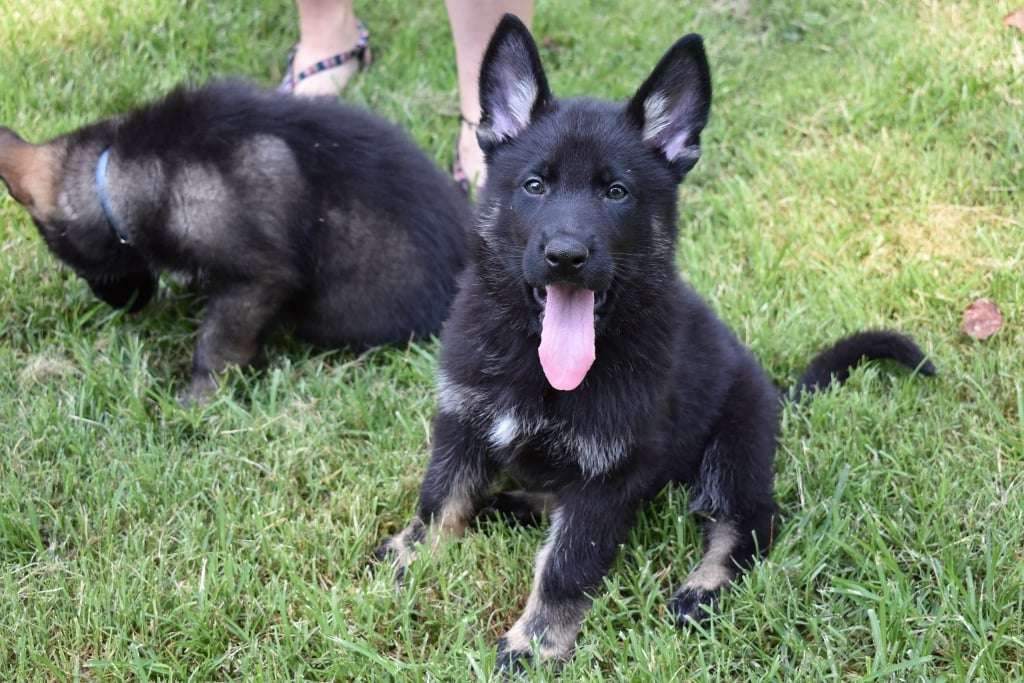
Regular Schedule
House-training your puppy will be more likely to success when you implement a regular schedule. A consistent schedule teaches your puppy that there are times to eat, drink, play, and eliminate. By regulating your puppy’s food and water intake, you will be able to determine the approximate times your puppy will need to relieve him or herself. If the feeding and water times are consistent you will find that the dog will eliminate at approximately the same times each day. It is important to establish a consistent schedule in regards to potty breaks, feeding, and water intake.
Your Puppy’s Diet
There may be many options in regards to today’s dog foods to meet your dog’s nutritional needs. Unfortunately, there is no one particular dog food that is best suited for every dog. There is also no guarantee that the food you have chosen, however highly regarded, will suit your dog’s individual nutritional needs.
Keep in mind that your dog’s food will affect the frequency and consistency of your dog’s daily bowel movements. You should consult with your veterinarian if your dog has frequent bowel movements or persistently loose stool. This could be a result of an allergic reaction to your dog’s food. Your vet may recommend that your dog be placed on a different or restrictive diet.
Some foods that are designed for adult dogs are not best suited for puppies and vice versa. Dog and puppy foods have different ingredients and nutritional content. Finding the best food for your individual dog may involve some patience and experimentation. If you have any questions about the different options of food to feed your dog consult with your vet for guidance.
Feeding should be done on a fixed schedule using dog food that is designed for your dog. Most dogs older than four months are usually fed twice daily, with the exception of large breeds, dogs with health problems, or diet restrictions. Some puppies may be fed more frequently, three or four times a day, before transitioning to twice daily.
At scheduled feeding times your dog’s food should not be left down from longer than 15 to 20 minutes. This gives your dog ample opportunity to consume what is provided. If your dog has not consumed its food after 15-20 minutes, remove the food and wait for the next scheduled feeding. Healthy dogs will not starve themselves. Your dog may pass up or nibble at a few feedings, but they will eventually learn to eat at the scheduled feedings. If you notice behavior and health changes in addition to appetite problems and you are concerned about a potential health issue affecting your dog’s appetite, you should consult with your vet immediately.
It is not recommended to leave your dog’s food down throughout the day or free feed. By leaving the food down for long periods, your dog will have the opportunity to pick at the food throughout the day, which can create a finicky eater or consume the entire amount at different times on different days. This will impact the timing and regularity of your dog’s bowel movements which will greatly impact your house-training efforts.
Most puppies will need to relieve themselves soon after a meal. The amount of time after a meal and the need to relieve themselves may vary by puppy. On average most puppies will need to go out within 5 to 30 minutes after eating and having water. As the house-training process progresses you will start to get a better idea of the amount of time for your individual puppy.
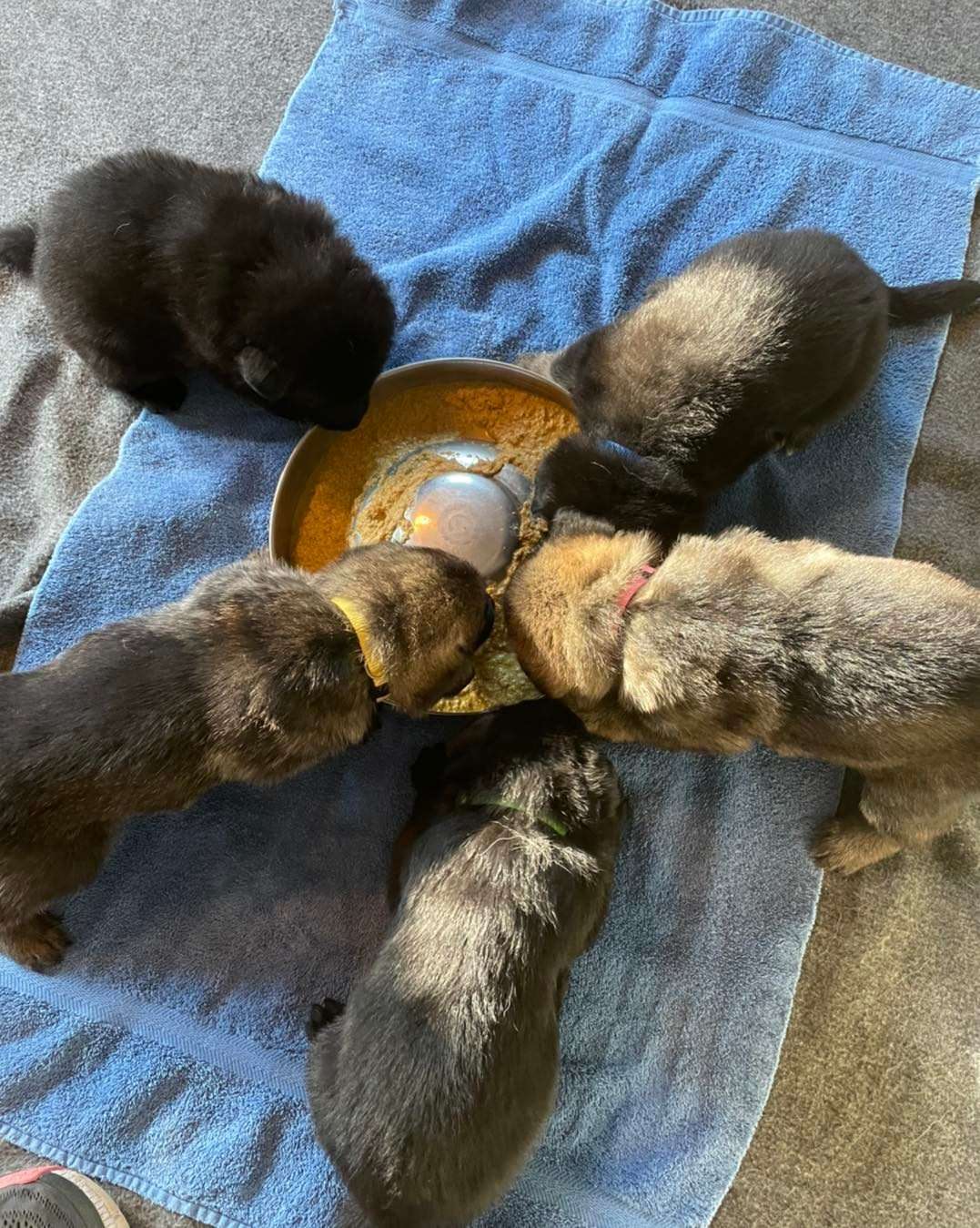
People Food
It is not recommended that you feed your dog people food or table scraps unless specifically instructed by your vet. In some situations, your vet may recommend people food for dietary or health reasons. Some foods which are edible for humans, and even other animals, can be potential hazards for dogs. Some of these foods may cause only mild digestive upsets, whereas, others can cause severe illness and possibly death. A diet consisting mainly of people food will also impact your dog’s nutritional needs and overall health. Feeding your dog people food also increases the potential of creating a dog that begs for food and other bad habits.
Treats
You may provide your puppy with dog specific treats on occasion throughout the day. This is contingent that they are consuming their regular meals. Giving treats too frequently throughout the day will have an impact on your dog consuming his regular food at meal times. Some dogs will fill up on treats or develop a habit of holding out for treats and will not consume their meals. Dogs that are satisfying their appetite with treats are also potentially impacting their nutritional needs.
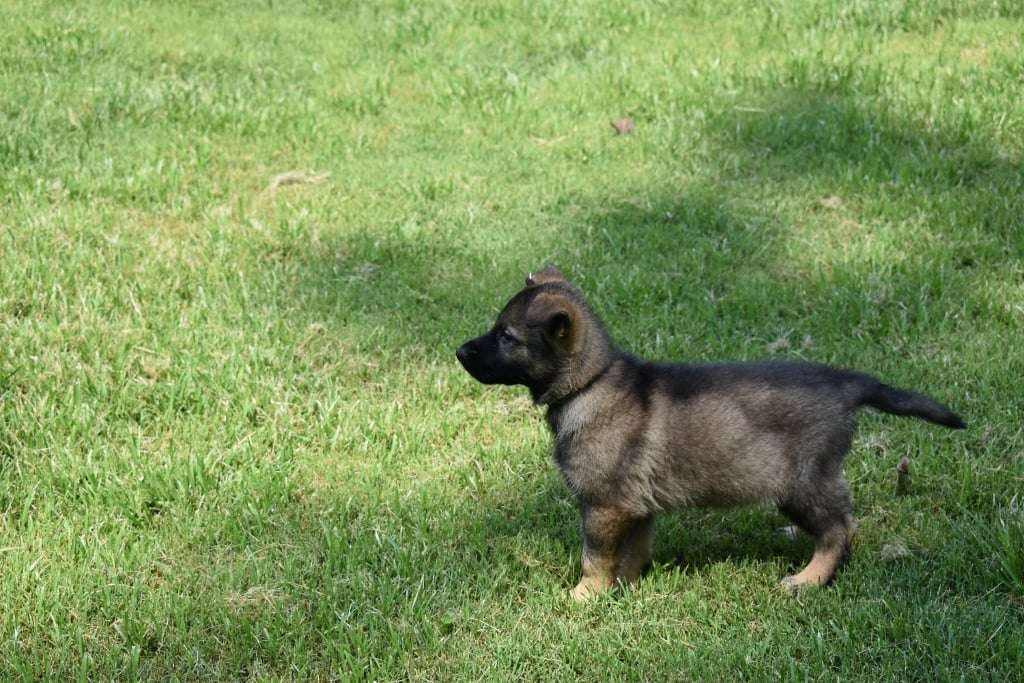
Water intake
Your puppy should be offered water on schedule during the house-training process. Puppies should not have free access to water throughout the day. Puppies will often drink water as an activity and this leads to full bladder that will need to be emptied. Offer your puppy water with its meals, during the middle of the day, in the evening at least two hours before the last potty break of the day. The key is not to limit the amount of water the puppy gets, but to limit the times it is available. Try not to give your dog any water within two hours of last potty break before bedtime. If the puppy has a health condition, has been extremely active, or is exposed to extreme temperature you may increase the opportunities for water throughout the day.
Puppies must go out first thing in the morning and the very last thing at night. Your puppy should not have access to water for at least two hours before its pre-bedtime bathroom break. In between bathroom breaks your puppy should be supervised by a responsible person 100% of the time or confines to its crate. Do not crate your dog longer than you know he can wait to eliminate. It is important to have a schedule on weekends or days off that resemble your normal daily schedule.
Some young puppies may benefit from a bathroom break during the middle of the night for the first week or more. This would require you to set your alarm clock to a time that is half-way between the last bathroom break of the previous day and the first bathroom break of the next day. This bathroom break should not be initiated by the puppy and water should not be given at this time. This middle of the night bathroom break should focus exclusively on the task at hand and be all business. As the days go by, you can start to gradually move this middle of the night bathroom break closer to the next day morning bathroom break. This can be done gradually in 15 to 20 minute increments until you are close to the next day’s morning bathroom creak and the middle of the night bathroom break has been eliminated. It is important to gradually wean away this middle of the night bathroom break to prevent this break from becoming routine.
As you proceed with house-training, stretch the day’s bathroom trips further apart each week by 15 minute intervals. The eventual goal is to have a healthy dog that is housetrained to go out a minimum of three to four times a day to go to the bathroom.
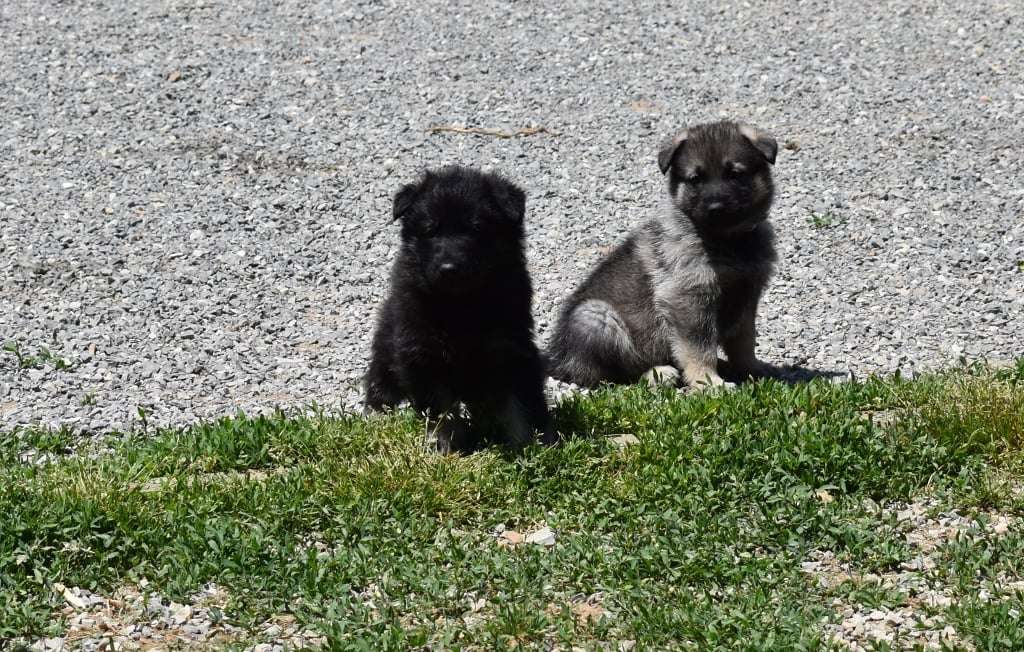
Going Outside
In order to teach your puppy where to use the bathroom, you should go outside with him each time. Put your puppy on a leash (5-6 feet in length) and a secure collar to take outside each time. By having your puppy on a leash you will be better able to supervise him and provide much needed feedback. Utilizing a dog door or leaving your dog unattended in the yard will make your house-training process much more difficult. It is also important for puppies to learn how to relieve themselves on a leash and in your presence. The leash and collar will allow you to prevent other types of misbehavior from developing such as eating things off of the ground or digging.
When you take your puppy out you should take him to a designated bathroom area in the yard or near your home. The scent of previous eliminations in this area will stimulate the puppy to use this area again. This will further advance the goal of having your puppy eliminate outdoors. When outside avoid walking the entire yard or neighborhood. This will only allow your puppy to get distracted, missing the meaning of your trip outdoors in the first place. Stand still in the area and allow the puppy to move around you.
You must also stay with your puppy when you are at the designated bathroom area. This will allow you to observe your puppy’s body language leading up to elimination. This will help you prepare for catching attempts to go indoors.
From day one start to associate a specific bathroom command or phrase when you reach the designated area. Use a phrase such as “hurry up” or “do your business”. This phrase will become the signal to let your dog know that it is time to focus and get down to the task at hand. This will also become a command that you will be able to use for the dog’s lifetime. It is extremely helpful to have a dog that eliminates on command. It is important to note that the action of elimination is rewarding for your puppy. By relieving itself the puppy will become more comfortable and this is a reward in itself. Once your puppy has finished going, softly praise him. Your verbal praise is crucial in helping your puppy understand it is correct to use the bathroom outside. Before praising him, be sure he’s finished eliminating. Puppies are easily distracted and praising him to soon may stop him from finishing what he started. Your feedback after the puppy goes is crucial to success.
Some may recommend providing your puppy with a treat or other type of food reward after he has completed going outdoors. This can potentially present problems and is not recommended. By using treats to reward your puppy when it relieves itself, you are possibly giving your puppy too many treats since puppies relieve themselves multiple times on a daily basis. The increased consumption of treats will have an impact on your puppy’s overall digestive process and frequency of bowel movements. This will result in a need for more trips outside. The old adage of what goes in must come out applies. Your puppy may also begin to associate returning indoors or focusing on you while outdoors in anticipation of receiving a treat. Some puppies may become consumed with the anticipation of treats instead of focusing on the task of relieving themselves outside. The reward of the relieving himself along with your verbal and physical praise should be plenty of incentive.
If your puppy happens to lie down or become distracted while outside, encourage your puppy to refocus and reissue your bathroom command. Getting your puppy on its feet and moving can also help stimulate the puppy to relieve himself.
The amount of time spent outdoors at each bathroom break should be consistent. Allow your puppy an average of five minutes to complete the task at hand. Giving your puppy 30 seconds on one trip and 30 minutes on another will be confusing and cause problems with the house-training process. If during the allotted outside time frame your puppy does not relieve himself, return indoors. It is important to closely supervise or confine your puppy after an unsuccessful potty break. This may provide you with a valuable opportunity to discipline your puppy if he attempts to go indoors. It is important to catch them in the act to effectively correct them. You may also need to confine the puppy to its crate if you are unable to supervise them after an unsuccessful outside trip.
While outdoors it is important to note that some puppies may need to relieve themselves in multiple attempts. Just because your puppy has urinated once or had a single bowel movement they may not be completely done. Avoid rushing indoors after the initial elimination and give your puppy a few more minutes to completely finish if needed. After he relieves himself you can also take him out for a longer walk or some play time. Playtime and walks should only begin after he has eliminated.
Anytime your puppy relieves himself outside, you can provide him with supervised time to move around the house. As your house-training process you can allow your dog a little more freedom between bathroom exercises.
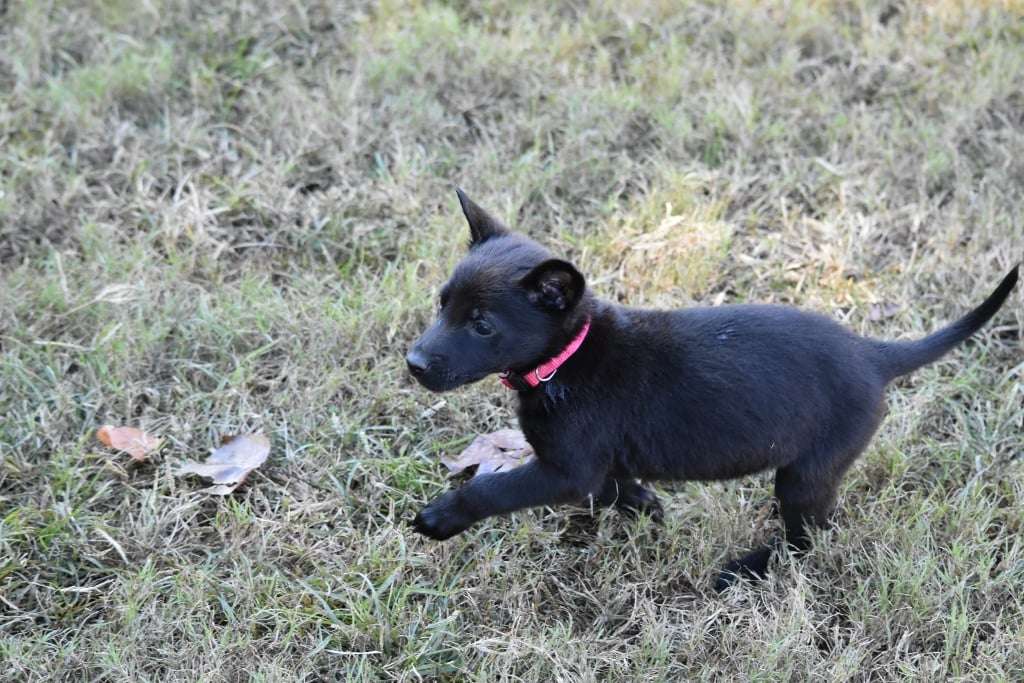
Establishing a Regular Schedule Review
A consistent schedule teaches your puppy that there are times to eat, drink, play, and go potty.
By regulating your puppy’s food and water intake, you will be able to determine the approximate times your puppy will need to relieve him or herself.
Puppies must of out first thing in the morning and the very last thing at night.
Your puppy should not have access to water for at least two hours before the pre-bedtime potty break.
In between bathroom breaks your puppy should be supervised 100% of the time by a responsible person or confined to its crate.
Do not crate your dog longer than you know he can wait to eliminate.
As you proceed with house-training, stretch the day’s bathroom trips further apart each week by fifteen minute intervals.
In order to teach your puppy where to use the bathroom, you should go outside with him each time.
Put your puppy on a leash (5-6 feet length) and a secure collar when outside.
When you take your puppy out you should take him to a designated bathroom area in the yard or near your home.
Stand still in the bathroom area and allow the puppy to move around you.
Associate a specific bathroom command or phrase when you reach the designated area.
Once your puppy has finished going, softly praise him.
The amount of time spent outdoors at each bathroom break should be consistent.
Anytime your puppy relieves himself outside, you can provide him with time out of the crate when you return in the house.
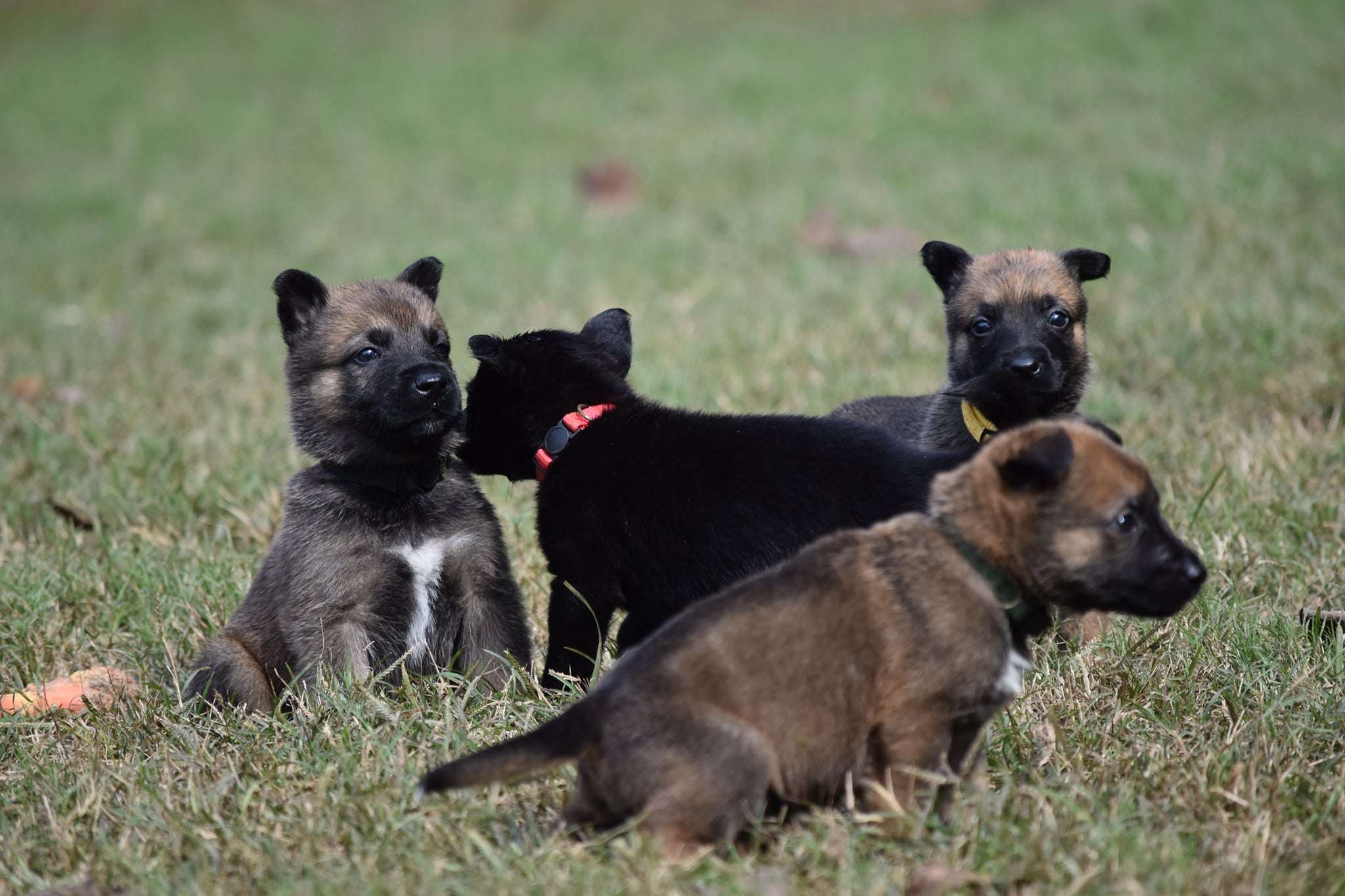
Feedback and Discipline
A house trained dog should not relieve itself indoors. The only exceptions would be a dog that has not been let outside according to schedule and can no longer physically hold is or is ill. Some dogs that have never attempted or had an accident indoors are not fully housetrained. They instead have become “convenience” trained. This is when the dog by constant trips outside and luck does not have an accident in the house. For a puppy to fully grasp the concept of house-training, they must make an attempt to relieve themselves in the house, then be caught in the act, and effectively corrected as a result. Don’t assume your puppy is completely housetrained before this happens.
If you do not catch your puppy in the act of relieving himself indoors, do not correct him for it. Any discipline after the fact will only confuse your dog and potentially cause your puppy to fear you. Every accident not caught in the act is an opportunity for the puppy to learn that your home is its potty area. If you find a mess that was left when you were not there, clean it up and talk it up as a learning experience. A missed accident only emphasizes the importance of constant supervision and the use of a crate.
If your dog does attempt to relieve itself in the house, you will need to respond immediately, to catch him in the act. This will be easier if you have taken not of your puppy’s body language before it relieves itself outside. Signs may include circling, pacing, whining, sniffing, crouching, or leaving the room. This is extremely helpful in catching your puppy in the act of trying to relieve itself in the house.
Corrections should be immediate and to the point. Some puppies will respond to a sharp, startling “NO!” A spray bottle filled with plain water and the nozzle turned to a stream can be very effective in getting your puppy’s attention and stopping an attempted accident. Often times two or three streams of water will startle the puppy and put a stop to them relieving themselves. Another way to interrupt your puppy is with a noise producing device such as a shaker can. A shaker can be an empty soda can that has a few small pebbles or pennies inside. Use a piece of tape to cover the opening once the pebbles or pennies are inside. When the puppy attempts to go indoors, lob the shaker can in the vicinity of the puppy to startle him. Make sure not to hit the puppy directly with the shaker can. A spray bottle and a shaker-can can also be useful for a puppy thinking that the house is correcting the puppy. The spray bottle is often preferred when there are other dogs in the household. Always take him out to the bathroom area to complete or finish what he attempted to do in the house. Use your bathroom command and then follow by lots of praise.
Keep a watchful eye on your puppy when he is active or after exercise. Activity will increase likelihood of your puppy needing to relieve himself and you catching him in the act to effectively discipline him.
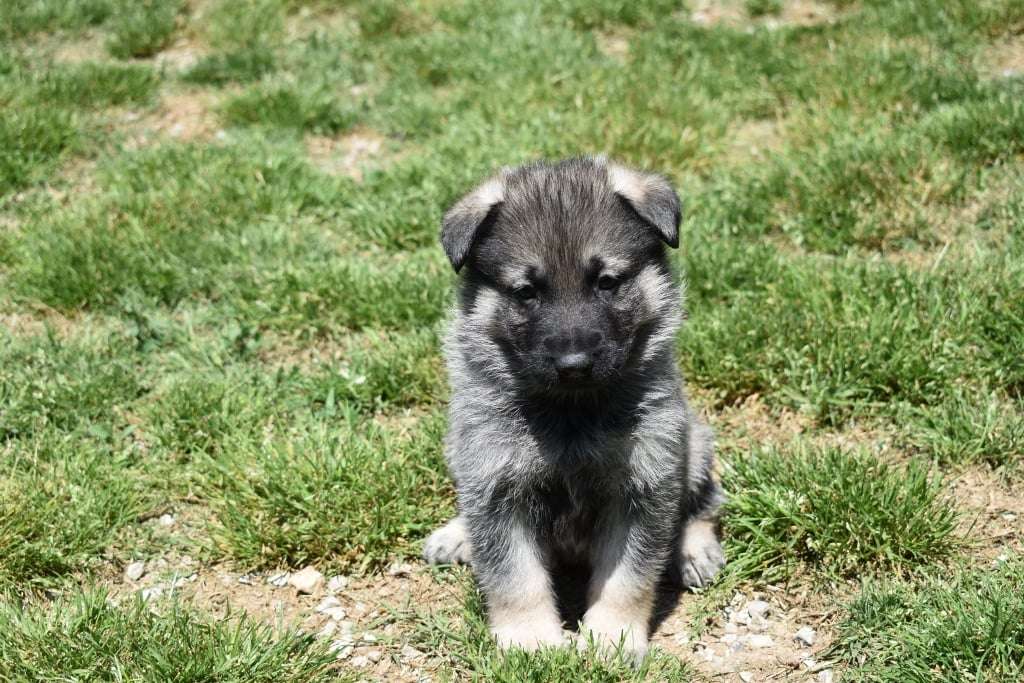
Discipline after the fact
Some owners still put into practice disciplining their puppy after the fact. An owner has left their puppy unsupervised and then discovers that their puppy has peed on the floor in the house. The owner then reacts to the accident on the floor by rubbing the puppy’s nose in the urine and/or scolding him. The owner then believes that the puppy “knows he has done wrong” and therefore the correction was effective. The owner believes the puppy feels a sense of guilt for going on the floor and this will curb the future accidents. Instead of correcting the puppy the owner is teaching the dog to act apprehensive as a result of scolding or nose rubbing. This action may also be interpreted as random erratic human behavior in the dog’s mine. The dog may begin to experience the same apprehension or what the owner interprets as guilt when an accident is on the floor. The accident on floor produces conditioned response to the impending response by the owner. The dog is not capable of understanding or associating the human’s late response with the action of peeing on the floor one minute or several hours ago.
The best way for corrections to be effective is to catch your dog in the act or when they are preparing to relieve themselves indoors. The dog must associate the correction with the action. If the correction comes after the action the end result will be the dog becoming confused. Corrections well after the fact will result in apprehension and fear directed towards you and others.
Hitting and Spanking
Hitting or spanking your puppy with your hand, newspaper, or other item is not an effective means for correcting undesired behaviors. Hitting your puppy will result in your puppy fearing you and possibly others. This form of intimidation could also make the puppy hand shy or defensively aggressive around people.
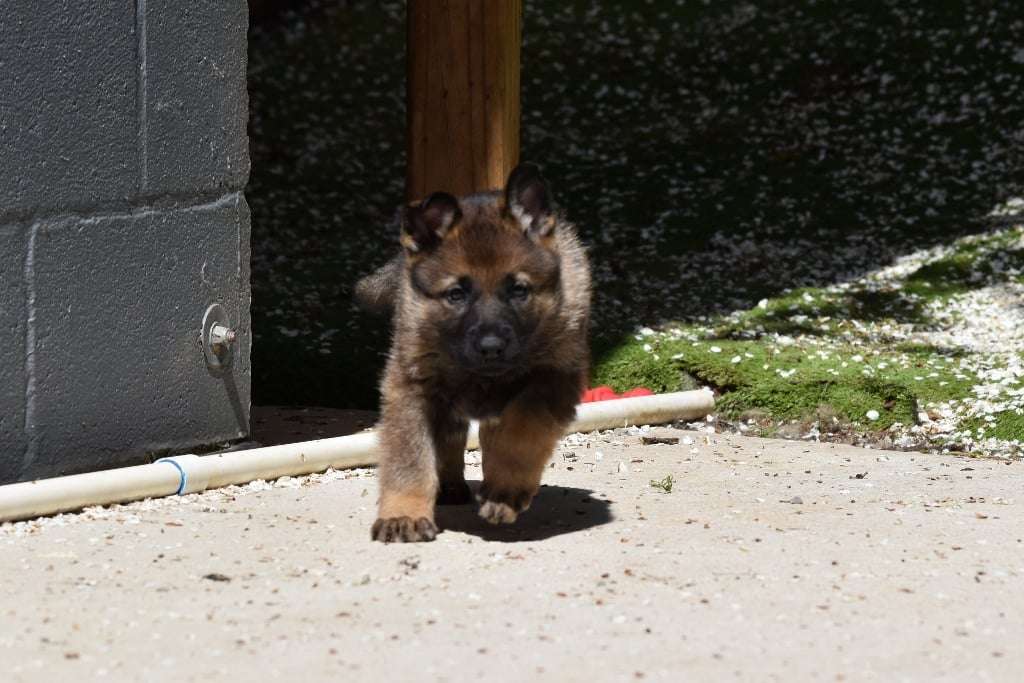
Discipline Review
For a puppy to fully grasp the concept of house-training, they must make an attempt to relieve themselves in the house, then be caught in the act, and effectively corrected as a result.
If you do not catch your puppy in the act of relieving himself indoors, then do not correct him for it.
If your dog does attempt to relieve itself in the house, you will need to respond immediately, to catch him in the act.
The best way for corrections to be effective is to catch your dog in the act or when they are preparing to relieve themselves indoors.
Always take the puppy out to the bathroom area to complete or finish what he attempted to do in the house.
Corrections after the fact will result in apprehension and fear directed towards you and others.
